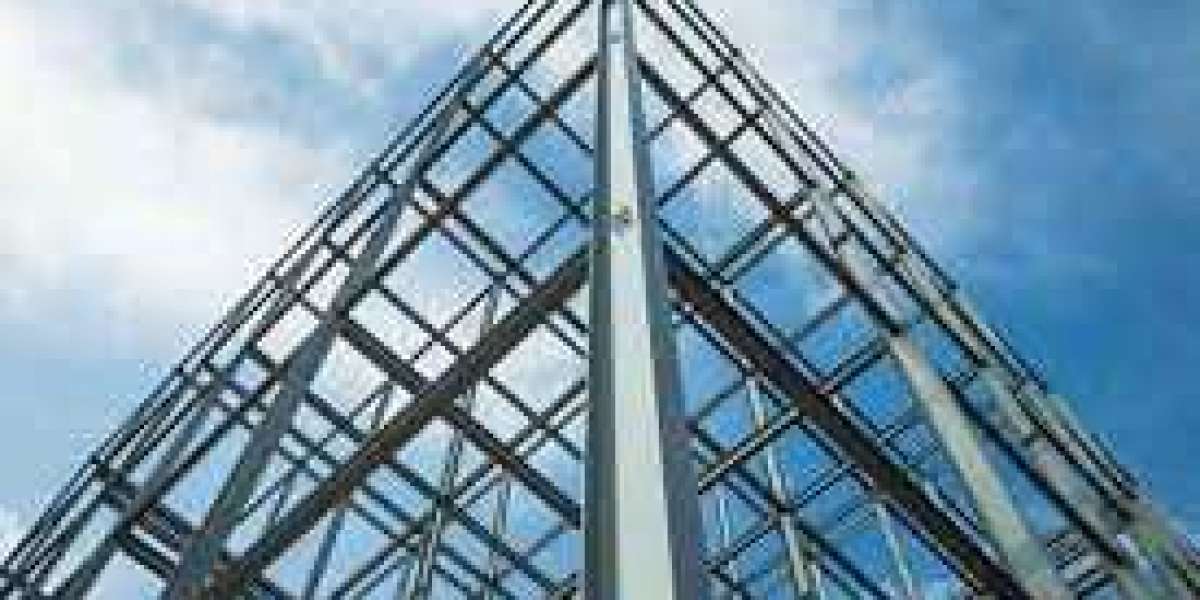In modern construction, steel has become a leading material for building durable, sustainable, and efficient structures. Among the different steel construction methods available today, steel frame construction and light gauge steel construction stand out as two popular choices. Both approaches offer unique benefits, but they cater to different project types, budgets, and timelines.
Choosing between them isn’t as simple as picking whichever sounds more advanced—each system has specific structural capabilities, installation processes, and cost implications. Whether you’re a homeowner planning a small residential build, a contractor taking on a commercial project, or a property developer aiming for long-term sustainability, understanding the key differences between steel frame and light gauge steel will help you make an informed decision.
This guide dives deep into the characteristics, strengths, challenges, and real-world applications of both construction methods, helping you evaluate which option aligns best with your needs.
1. What is Steel Frame Construction?
Steel frame construction refers to the use of structural steel beams, columns, and girders to form the skeleton of a building. These steel members are fabricated off-site, transported to the construction location, and assembled using bolting or welding.
This method is commonly seen in high-rise buildings, industrial warehouses, large retail complexes, and bridges due to its superior load-bearing capacity and resistance to natural forces like wind and earthquakes. The structural steel sections are typically much larger and heavier compared to light gauge steel components, allowing for the creation of massive, open spaces without the need for many internal load-bearing walls.
Advantages of Steel Frame Construction:
- Exceptional strength for heavy-load applications
- Long lifespan with minimal maintenance
- Excellent resistance to fire, pests, and corrosion (with proper treatment)
- Allows for large spans and open interior layouts
Challenges:
- Higher material and labor costs compared to light gauge steel
- Requires specialized equipment for lifting and installation
- Longer construction timelines in some cases
2. What is Light Gauge Steel Construction?
Light gauge steel (LGS) construction uses thin sheets of cold-formed galvanized steel shaped into C, U, or Z profiles. These sections are lightweight but strong, making them ideal for low- to mid-rise residential buildings, partition walls, and modular structures.
The thin steel sheets are manufactured to precise dimensions, allowing for fast assembly on-site with screws or rivets. Since the components are lighter, they can be easily handled without heavy machinery, reducing labor costs and speeding up construction.
Advantages of Light Gauge Steel Construction:
- Lightweight yet durable
- Easy to transport and assemble
- Cost-effective for smaller structures
- Corrosion-resistant due to galvanization
- Environmentally friendly (fully recyclable)
Challenges:
- Lower load-bearing capacity compared to structural steel frames
- Not ideal for very tall or extremely heavy buildings
- Requires careful design to prevent warping or buckling
3. Comparing Structural Strength
Structural steel frames are designed to handle immense loads, making them suitable for skyscrapers, stadiums, and heavy industrial projects. Their rigid connections and thicker cross-sections provide exceptional stability, even under extreme environmental conditions.
Light gauge steel, on the other hand, is best suited for projects where load demands are moderate. It can still be used for multi-story buildings, but typically up to five or six floors, depending on engineering specifications. While LGS lacks the brute strength of structural steel, it excels in speed and flexibility for smaller-scale projects.
4. Cost Considerations
One of the most significant deciding factors for many clients is cost. While both options are more expensive than traditional timber framing, their performance and durability often justify the investment.
Steel frame construction generally has higher upfront costs due to:
- Thicker, heavier steel sections
- Need for cranes and heavy equipment
- Longer installation times for large members
Light gauge steel typically offers cost savings because:
- Materials are lighter and require less handling equipment
- Faster installation reduces labor hours
- Smaller crews can handle assembly without specialized machinery
5. Speed of Construction
Light gauge steel construction is considerably faster for smaller projects. Since components are lightweight and easy to assemble, a skilled crew can complete framing in a fraction of the time it would take with structural steel.
Steel frame construction, while potentially slower in assembly, is often chosen for large-scale projects where speed is balanced with structural demands. In these cases, prefabrication of steel members can help offset longer on-site timelines.
6. Durability and Maintenance
Both systems offer long lifespans and excellent resistance to decay, pests, and fire. However, steel frame buildings, with their thicker sections, tend to require less frequent maintenance in heavy-use or industrial environments.
Light gauge steel, while durable, may need additional protective coatings in highly corrosive environments (e.g., coastal areas) to extend its lifespan.
7. Sustainability and Environmental Impact
Steel is one of the most recyclable construction materials available, making both systems environmentally friendly. Light gauge steel often edges ahead in sustainability because:
- It requires less raw material
- Its production generates fewer carbon emissions compared to structural steel
However, the durability of steel frame construction means buildings last longer, reducing the need for demolition and rebuilding over time.
8. Common Applications
Steel Frame Construction Applications:
- High-rise commercial towers
- Industrial plants and warehouses
- Large-scale retail complexes
- Bridges and infrastructure projects
Light Gauge Steel Construction Applications:
- Residential homes and duplexes
- Interior partition walls
- Modular housing units
- Small commercial buildings
9. Feature Cost Comparison Table
Feature | Steel Frame Construction | Light Gauge Steel Construction |
Material Thickness | Heavy, structural sections | Thin, cold-formed sections |
Load-Bearing Capacity | Very high | Moderate |
Best For | Large, heavy-duty structures | Low- to mid-rise buildings |
Construction Speed | Moderate to slow | Fast |
Cost | Higher upfront investment | More cost-effective |
Equipment Needs | Cranes, welding tools | Basic hand tools, light machinery |
Durability | Extremely high | High, but less than structural steel |
Environmental Impact | Long-lasting, recyclable | Lightweight, recyclable, lower emissions |
Design Flexibility | Excellent for large spans | Excellent for modular and customizable layouts |
Analysis of the Table
From the comparison, it’s clear that the choice between steel frame and light gauge steel largely depends on project scale, budget, and structural requirements. If you’re constructing a high-rise building or a facility with heavy load demands, the strength and rigidity of a full steel frame make it the ideal choice. On the other hand, if speed, cost-effectiveness, and ease of assembly are top priorities—especially for residential or small commercial builds—light gauge steel offers significant advantages.
10. Practical Tips for Choosing the Right Option
- Assess Project Size and Purpose – Larger, taller, or heavy-use buildings should lean toward structural steel, while smaller, lighter projects benefit from light gauge steel.
- Consider Timeline – If speed is critical, LGS can save weeks or even months on construction time.
- Evaluate Long-Term Maintenance – Structural steel may offer lower maintenance in harsh conditions, while LGS might require periodic checks for corrosion.
- Budget Strategically – Factor in not only material costs but also labor, equipment, and future maintenance expenses.
- Consult a Structural Engineer – A professional assessment ensures safety, compliance, and cost efficiency.
11. Frequently Asked Questions
Q1: Can light gauge steel be used for multi-story buildings?
Yes, light gauge steel can be used for buildings up to 5–6 stories, depending on engineering design and local building codes.
Q2: Which option is more earthquake-resistant?
Both systems perform well in seismic zones, but structural steel frames generally offer greater flexibility and load resistance for very large structures.
Q3: Is light gauge steel cheaper than timber framing?
It can be more expensive than timber initially, but its durability, fire resistance, and low maintenance often make it more cost-effective over time.
Q4: Does steel frame construction require more maintenance?
Not necessarily. Structural steel is extremely durable, and with proper coatings, it can require minimal maintenance over decades.
Q5: Which is better for modular construction?
Light gauge steel is generally preferred for modular and prefabricated building systems due to its lightweight, easy-to-handle components.
Conclusion
Steel frame and light gauge steel construction each hold unique strengths that cater to different project needs. Steel frame construction excels in large-scale, heavy-duty projects that demand unmatched strength and durability. Light gauge steel construction, meanwhile, shines in smaller to mid-sized builds where speed, cost-efficiency, and flexibility are key.
By carefully weighing your project’s size, budget, structural requirements, and timeline, you can choose the method that delivers the best results for your specific goals. Whether you’re aiming for a towering commercial masterpiece or a sleek, efficient residential build, modern steel construction offers the resilience, sustainability, and design freedom to bring your vision to life.








